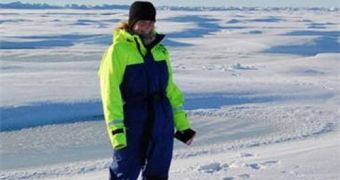The Laptev Sea North of Siberia is one of the regions where many rivers passing through the inhospitable land mass spill into the Arctic Ocean. One of the largest such waters, known as Lena, is one of the ten largest rivers in the world, and features an extensive drainage basin and length. As it flows to the sea, the water picks up massive amounts of organic carbon, which are becoming dislodged from the permafrost, and carries them to sea. This is very dangerous, experts warn, as the dangerous chemical is then released into the atmosphere, AlphaGalileo reports.
The organic carbon making its way into the Laptev Sea is not immediately trapped and stored, as one would expect. Rather, it slowly degrades in coastal waters just off the mouth of the Lena, and generates important amounts of carbon dioxide, which are then released into the atmosphere. Undoubtedly, some of the dangerous greenhouse gas is trapped again by the world's oceans and forests, but most of it adds to the existing concentrations, exacerbating the effects of climate change. The situation is only bound to get worse, experts believe, as higher temperatures cause more of the permafrost to melt.
Tundra soils have been considered dangerous until now only because they emit large amounts of the dangerous gas methane as they warm. Carbon was also known to be produced, but scientists considered that the amounts would be negligible on a global scale. It would now appear that the vicious circle that engulfs the North and South poles, and adjacent regions such as Greenland, is extending to frozen territories. As more gas is released, the temperature climbs, and even more compounds are set free. There is currently no way to counteract these phenomena, scientists say, other than through combined, international efforts. After the Copenhagen UN summit, however, this seems unlikely.
“Large amounts of organic carbon are currently stored within the permafrost and if this is released and gets carried by the rivers out into the coastal waters, then it will result in an increased release of carbon dioxide to the atmosphere,” University of Gothenburg Department of Chemistry postgraduate student Sofia Hjalmarsson explains. All the regions the expert analyzed, including the Laptev Sea, the East Siberian Sea, the Chukchi Sea, and the Baltic Sea, show the same worrying signs of carbon production.

 14 DAY TRIAL //
14 DAY TRIAL //